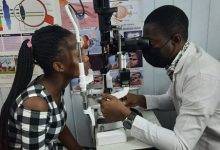The Breast Cancer Awareness Month, marked in countries across the world every October, helps to increase attention and support for the awareness, early detection and treatment as well as palliative care of this disease.
There are about 1.38 million new cases and 458 000 deaths from breast cancer each year (IARC Globocan, 2008). Breast cancer is by far the most common cancer in women worldwide, both in the developed and developing countries. In low- and middle-income countries the incidence has been rising up steadily in the last years due to increase in life expectancy, increase urbanization and adoption of western lifestyles.
The World Health Organization (WHO) reports that currently there is not sufficient knowledge on the causes of breast cancer, therefore, early detection of the disease remains the cornerstone of breast cancer control. When breast cancer is detected early, and if adequate diagnosis and treatment are available, there is a good chance that breast cancer can be cured. If detected late, however, curative treatment is often no longer an option. In such cases, palliative care to relief the suffering of patients and their families is needed.
The majority of deaths (269 000) occur in low- and middle-income countries, where most women with breast cancer are diagnosed in late stages due mainly to lack of awareness on early detection and barriers to health services.
WHO promotes comprehensive breast cancer control programmes as part of national cancer control plans. The recommended early detection strategies for low- and middle-income countries are awareness of early signs and symptoms and screening by clinical breast examination in demonstration areas. Mammography screening is very costly and is feasible only in countries with good health infrastructure that can afford a long-term programme.
Breast cancer is the second commonest cancer among women in Ghana. It forms 15% of all cancer and 40% of female cancers. Estimates from the WHO put the Age Standardised Incidence Ratio (ASIR) at 37/100,000 of the population, though there is no cancer registry in Ghana to substantiate this. In Ghana most patients (50-70%) present with advanced (stage III and IV) disease, many months (8-10 months) after first noticing a change in their breasts. The biological nature of breast cancers in Ghana also confers a poorer prognosis: The WHO estimates the incidence-mortality ratio of Breast cancer in Ghana as 0.68, compared to 0.2 in the USA29. Mortality from the disease is therefore relatively high in Ghana and other developing countries. Baako found a 5- year survival of only 25% in Korle Bu Teaching Hospital (KBTH) compared to over 85% in the USA in 2001. There has been increase in awareness on breast cancer by various organizations including CSOs and NGOs. They periodically organize clinical breast screening programs and promote self breast examination.
Breast cancer affects Ghanaians from as young as age of 20 years, even though most of the younger women have sarcomas of the breast. The disease is generally commoner as one gets older, but the majority of breast cancer cases in Ghana are between the ages of 40 – 49 years
Most cases of Breast Cancer do not have any identifiable cause. However women would be educated about the predisposing factors of breast cancer and encouraged to adopt healthy lifestyles. Women who have an increased risk of breast cancer (e.g. strong family history of breast cancer in first degree relatives) would be encouraged to be more breast aware.
Two methods of early detection would be employed, Breast Self Examination and Clinical Breast Examination. Breast self examination should be taught as a means of creating breast cancer awareness and for encouraging early detection of diseases of the breast. This education should start from the age of sixteen and should be taught in all schools. Things to note about the breast include lumps (in breast and/or in armpit), dimpling, darkening, nipple inversion, unusual discharge. The important message is to make women report any change in their breast. Breast awareness education should also be combined with education addressing the many misconceptions about breast cancer.
In older women, educational messages should emphasize early detection and the importance of having prompt, recommended and adequate treatment. Lastly it must aim at reducing the stigma associated with the disease. Breast self examination should be done a week after the menstrual periods in pre-menopausal, and on a particular day of each month for postmenopausal women.
Clinical Breast Examination should be done every three years for those who are below 35 years of age and once a year for those who are 35 years and above. Mammography should be used for women who are 40 years and above..
. Among the 7 million global deaths from cancer in 2001, an estimated 2.43 million (35%) were attributable to the joint effects
of risk behavioural factors (overweight and obesity, low fruit and vegetable intake, physical inactivity, smoking, alcohol use). Alcohol abuse has synergistic risk with tobacco abuse (National Cancer Control Strategy for Ghana).
What is known is that about a third of cancers can be prevented. Another third can be successfully treated if seen early.
Dietary patterns, foods, nutrients and other dietary constituents are closely associated with the risk for several types of cancer, including breast cancer. It has been estimated that 35% of cancer deaths may be related to dietary factors. Recently, dietary polyphenols have received much attention for their health benefits, including anti-cancer properties.
Dietary polyphenols display a vast array of cellular effects, they can affect all stages of cancer. The potential anti cancer effect of polyphenol compounds have been found to be specific, and cancer cell lines appear to be more sensitive than normal cells, since polyphenols have shown higher effects on cancer cells than in their normal counter-parts. Polyphenols are present in fruits, vegetables, and seeds. The richest food source of polyphenol on weight basis is cocoa. Daily/regularly consume polyphenol-rich cocoa to prevent cancer.
DR. EDWARD O. AMPORFUL
CHIEF PHARMACIST
COCOA CLINIC




